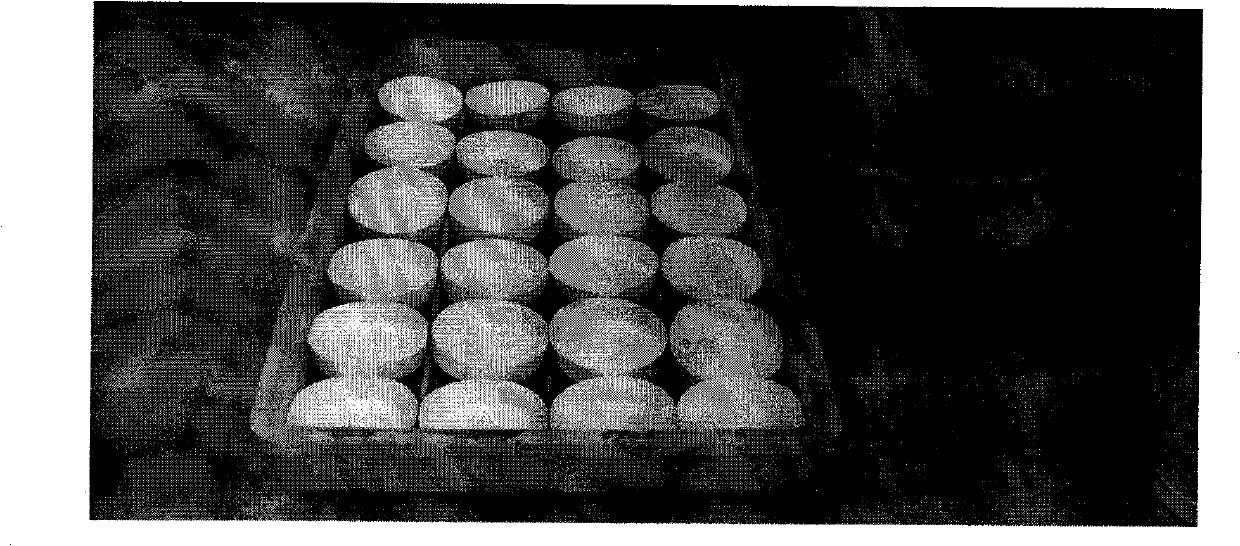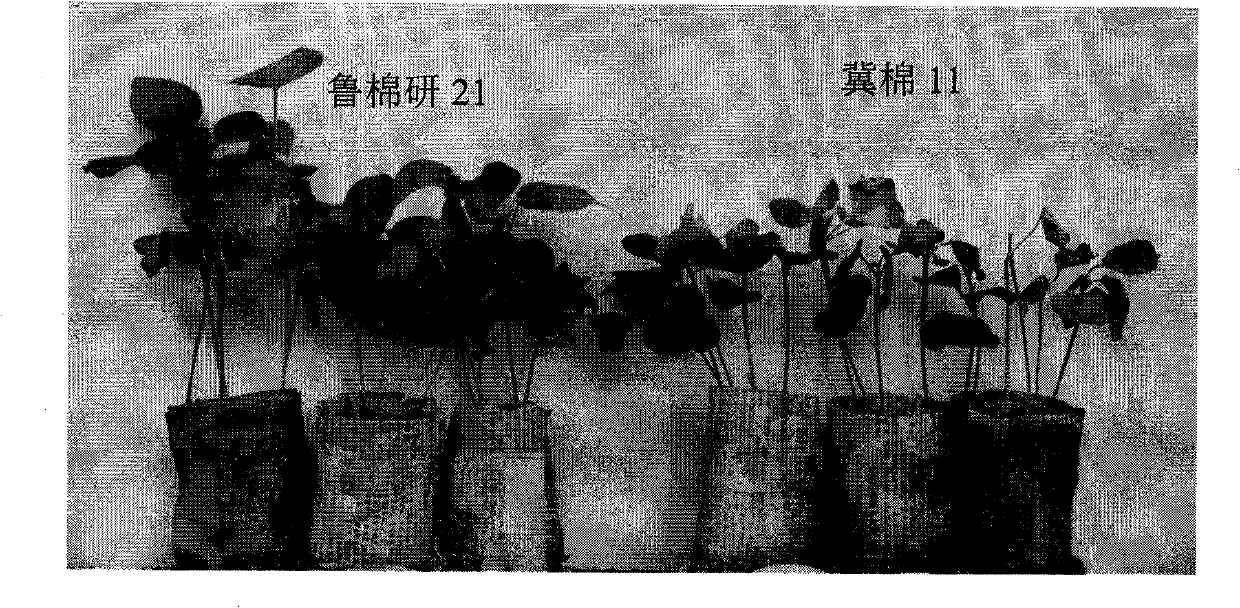Quantitative dip in bacterial suspension method for identifying resistance to cotton verticillium wilt using vermiculite sandy soil bottomless bowl of paper
A cotton verticillium wilt, linerless technology, applied in the field of phytopathology, can solve the problems of test failure, the susceptible control does not meet the identification standard, etc., and achieves the effects of uniform root injury, short identification period, and sufficient disease incidence.
- Summary
- Abstract
- Description
- Claims
- Application Information
AI Technical Summary
Problems solved by technology
Method used
Image
Examples
Embodiment Construction
[0025] 1. Make a nutrition bowl
[0026] Mix the purchased vermiculite and sun-dried river sand evenly at a ratio of 6:4, make a 6cm×10cm paper tube with newspaper, and use a stapler to fasten both ends of the paper tube tightly to prevent the paper bowl from loosening. Put the paper tubes into a 75cm×35cm×15cm (length×width×height) plastic tray, with 5 bowls in each row, 6 rows in total, 3 rows at each end of the tray, with a distance of 15cm in the middle. Put the mixture of vermiculite and sand into the paper tube, 2cm away from the upper edge, to make the vermiculite sand nutrition bowl.
[0027] 2. Watering and preparing for sowing
[0028] Irrigate water from the gap in the middle of the plate so that the vermiculite sand in the nutrition bowl can fully absorb water. It is advisable that the top vermiculite sand in the paper bowl is moist and there is no accumulated water in the plate.
[0029] 3. Seed treatment and sowing
[0030] The seeds to be tested were develore...
PUM
 Login to View More
Login to View More Abstract
Description
Claims
Application Information
 Login to View More
Login to View More - R&D
- Intellectual Property
- Life Sciences
- Materials
- Tech Scout
- Unparalleled Data Quality
- Higher Quality Content
- 60% Fewer Hallucinations
Browse by: Latest US Patents, China's latest patents, Technical Efficacy Thesaurus, Application Domain, Technology Topic, Popular Technical Reports.
© 2025 PatSnap. All rights reserved.Legal|Privacy policy|Modern Slavery Act Transparency Statement|Sitemap|About US| Contact US: help@patsnap.com



